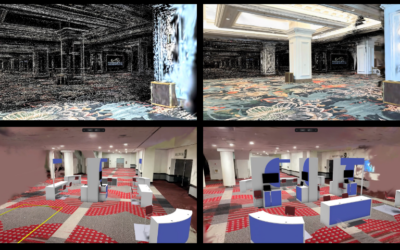Figure 1: Students evaluate S3D while being photographed in S3D. (courtesy of 3D India)
No standards and insurmountable technical barriers
Stereo vision is accomplished primarily by providing the viewer with two similar but horizontally offset images. Various treatises 1, 2 and summaries 3 have been written about the principals; I’ll assume you have already read them.
Stereovision is often called 3D. It’s not 3D but an approximation. To avoid the ambiguity, I use the term S3D — stereo 3D.
While at Evans and Sutherland Computer (E&S) Corporation (Salt Lake City) in the mid-1970s, Stephen McAllister invented the first S3D glasses for use with computers. The prototype had duct tape mounted to a small cardboard box on the LCDs. Because of the ghosting effects, E&S never commercialized the design.
In 1986-7, Jim Fergasen, Art Berman, Larry Meyer, and Lenny Lipton (1940–2022) of StereoGraphics (San Rafael, California) developed the ZScreen — it looked like a piece of window glass covering the monitor screen. That device was widely used for a year or two, and then StereoGraphics developed the first successful active eyewear product, CrystalEyes. Both E&S and Silicon Graphics used StereoGraphics’ eyewear.

Figure 2: StereoGraphics CrystalEyes first shutter glasses. (courtesy of Lenny Lipton)
Active eyewear consists of a pair of glasses that look like sunglasses. Each eyepiece is an LCD that acts like a shutter, opening and closing several times a second. When the left eye is open, the right is shut, so they must switch more than 30 times a second, or a flicker is experienced. The lenses are synchronized with the image via an infrared beam or radio frequency signal sent to the glasses from the computer or cinema screen. The glasses contain the circuitry to drive the lenses and a small battery.
As computers got better graphics controllers, faster operation, and more memory, larger image sizes could be generated in real-time.
A stereovision system consists of a display and some devices to give alternate views to the observer’s eyes.
There are three basic techniques for accomplishing the eye-brain trick:
The first devices were the parallax barrier in the Renaissance and auto-stereoscopic viewing. Hiram Deeks invented lenticular S3D in 1906, roughly a half-century later. Light-field auto stereo came about in the 1920s from a disciple of Lippmann, who thought it up in 1909.
- Active shutter glasses, which block the view on an alternating basis between the eyes.
- Passive glasses, which redirect the eye’s view of the image.
- Color separation — both simple anaglyph and more sophisticated filter-based systems.
A great deal has been written about these techniques, and there is abundant argument about the practicality of each approach.
Auto-stereoscopic, also known as glasses-free displays, has been used in mobile devices such as handheld game consoles, tablets, and smartphones. They can also be found in magazines, catalogs, and comic books. A few larger-screen systems, such as PCs, TVs, point-of-sale terminals, and signage, also employ such technology. Large-screen TVs and cinemas have not been proven to offer a satisfactory viewing experience with an auto-stereoscopic screen.
Second to the cinema, PCs have been the most significant and oldest S3D platform.
S3D was first used in microcomputers and PC games in 1987. One of the first game developers was Brightland, which created “SpaceSpuds”, the first S3D game on the Commodore Amiga, and “VR Slingshot”, the first S3D game on the PC. They also ported “Quake” to S3D for H3D glasses.
The first wave of S3D for the PC started in 1995 when StereoGraphics introduced its SimulEyes VR, low-cost stereo glasses for consumer multimedia, with an estimated street price under $140. Several other companies entered the PC market in 1996 after introducing Windows 95.
One of the leading companies of the time was NuVision, the R&D and marketing arm of Vikay Industrial, one of Asia’s largest LCD manufacturers. NuVision offered their HSG01 stereo glasses for Windows 95-based PCs and connected them via the parallel printer port. NuVision was one of the pioneers in the market. The company’s roots are in the research labs of Tektronix, where engineers developed the Pi-cell technology for switching the display between the right and left eye.
In 1998, Megabyte, founded in 1993 in Fremont, California, developed several innovative ideas: their concept of cooperative graphics AIB technology and the first stereoscopic 3D driver in 1988. The idea was that games, already modeled and rendered in 3D with x, y, and z, are only missing a second camera view. David Cook, Metabyte’s Director of Engineering, and his team developed a custom driver to capture the 3D information while playing the game and create the second camera view.

Figure 3: Wicked S3D glasses (Source: Game Chronicals)
In December 1998, Metabyte announced the release of Wicked 3D, the first computer glasses and driver combination for PC with 160 game titles supported. These drivers worked with nearly all the available 3D solutions in the market and were free to use, marking the first heyday of stereoscopic 3D gaming.
Elsa, a graphics board company founded in Aachen, Germany, in 1980, and NVIDIA, a graphics chip company founded in 1993 in Santa Clara, California, led the second wave of S3D in the PC in 1999. Except for a few dedicated hobbyists, the market for S3D PC games dropped off in 2002 after the internet bubble drove down the computer industry.

Figure 4: Elsa 3D Revelator glasses (source Stereo3D.com0
Unfortunately, the benefits of this innovation were short-lived. First, NVIDIA’s software only worked on desktop graphics boards, which cut out half the potential GPU market. CRT monitors required for 3D to work were becoming scarce in favor of LCD panels, which hurt the viability of maintaining the software support the drivers needed.
In addition, games were growing more complex, and the drivers needed to be more compatible with each software innovation. NVIDIA’s software had trouble with post-processing effects like bloom, HDR, blur, and more, and this forced gamers to turn off many special effects in their games.
By 2000, S3D on the PC was dead. Ironically, it was the same year NVIDIA introduced the single-chip GPU, which might have spurred interest and capabilities, but the bloom was off the rise, and there was no going back.
S3D became popular again in 2005 when Nintendo introduced the Wii game console. It was revolutionary because it introduced a new user interface: gesture controls. As such, it captured the player’s position and movements in 3D space — but it did not display the images in S3D; the machine didn’t have the computing power for that, and there were no 3D TV screens in Japanese, U.S., or European homes at the time.
In 2008, Nintendo began work on a new generation of their wildly popular DS handheld game machine. In a meeting with Satoru Iwata, president of Nintendo, one of the developers said, “What about trying 3D?” Shigeru Miyamoto (1952–), the legendary game developer (“Mario”, “Donkey Kong”, “The Legend of Zelda”, “Star Fox”, etc.), thought the developer was too young and “someone unacquainted with the pain” Nintendo suffered with its past S3D efforts. “We had undergone some painful experiences in our efforts at 3D, so we’d grown somewhat reluctant,” Iwata recalled.
It wasn’t easy; it had to be auto-stereoscopic, glasses-free, lightweight, and inexpensive. At the time, Sharp had one of the best auto-stereoscopic lenticular lens manufacturing capabilities, which was essential for the volume Nintendo expected. (At the time, 3M, Dow, Avery Dennison, and several Korean and Japanese companies were all about as good as each other.)

Figure 5: Nintendo 3DS (Source: Wikipedia)
Nintendo also needed a unique graphics controller. The company had relied on simple screen management logic circuits in the past. They did all the graphics work in the ARM 9 processor. For the 3DS, they would go to the more powerful ARM 11, but even that wouldn’t be enough. After talking to all the leading graphics chips and providers of graphics processor designs (known as intellectual property (IP) suppliers) at the time, Nintendo settled on Digital Media Professionals (DMP), a Tokyo company founded in 2002. DMP had a high-performance graphics engine, the Pica processor, with built-in graphics functions and offered the design as IP.
Nintendo took the wraps off its new handheld game machine, the Nintendo 3DS, at the E3 Conference in 2010 and announced it would be released by the end of March 2011. The device also had two cameras so that S3D photos could be taken and later displayed. Nintendo officially discontinued the production of the 3DS family of handheld consoles production on 16 September 2020, making it the longest-produced S3D device and the highest-volume S3D device.
With the departure of Nintendo’s 3DS, the chapter on S3D for PCs and the game consoles ended. The next wave of hardware would be VR.
[1] https://en.wikipedia.org/wiki/Stereoscopy
[2] https://stereoscopy.blog/2019/06/09/what-is-stereoscopy/
[3] Lipton, L., Foundations of the Stereoscopic Cinema, https://thefsu3dproject.wordpress.com/wp-content/uploads/2010/02/foundations-600dpi.pdf



